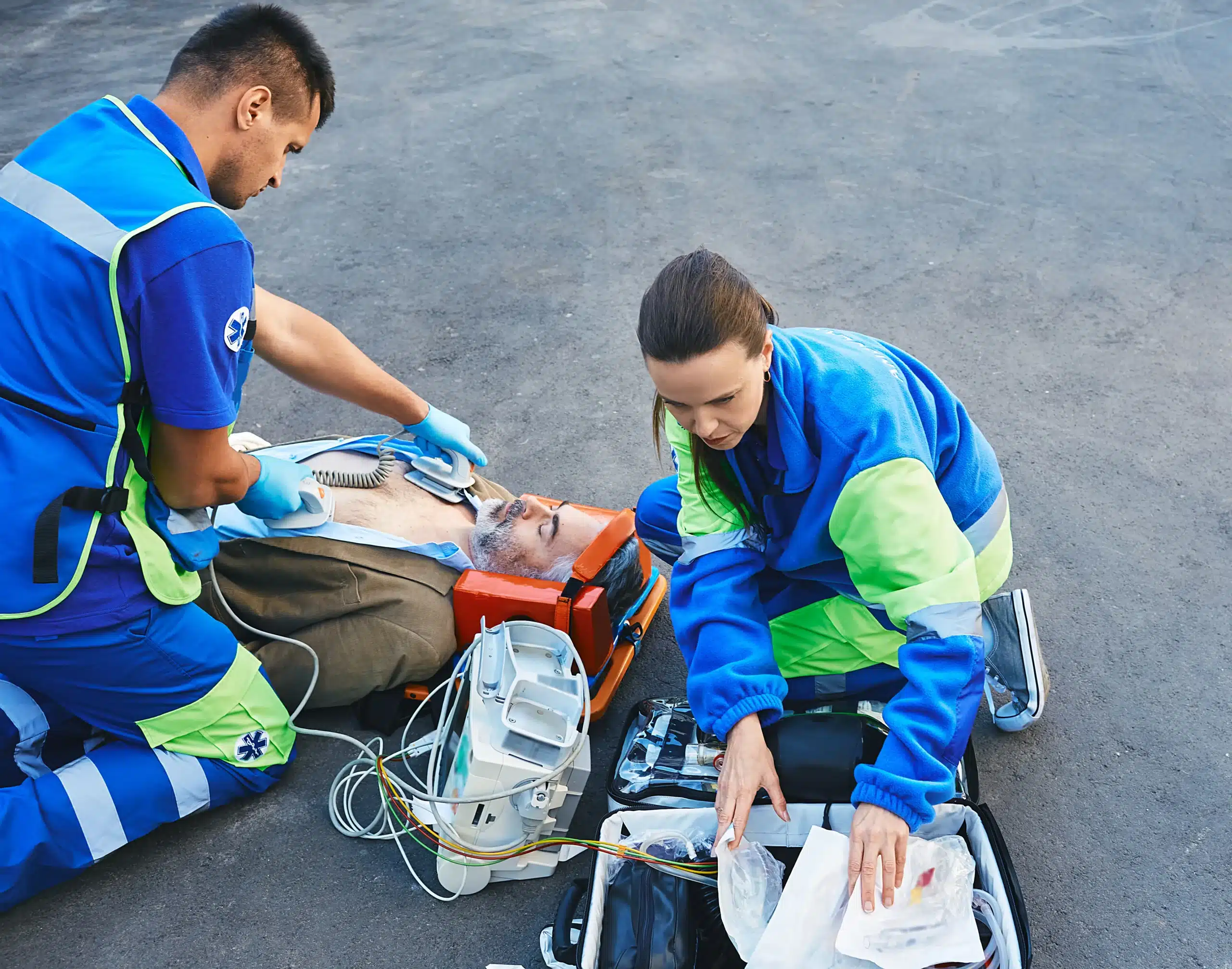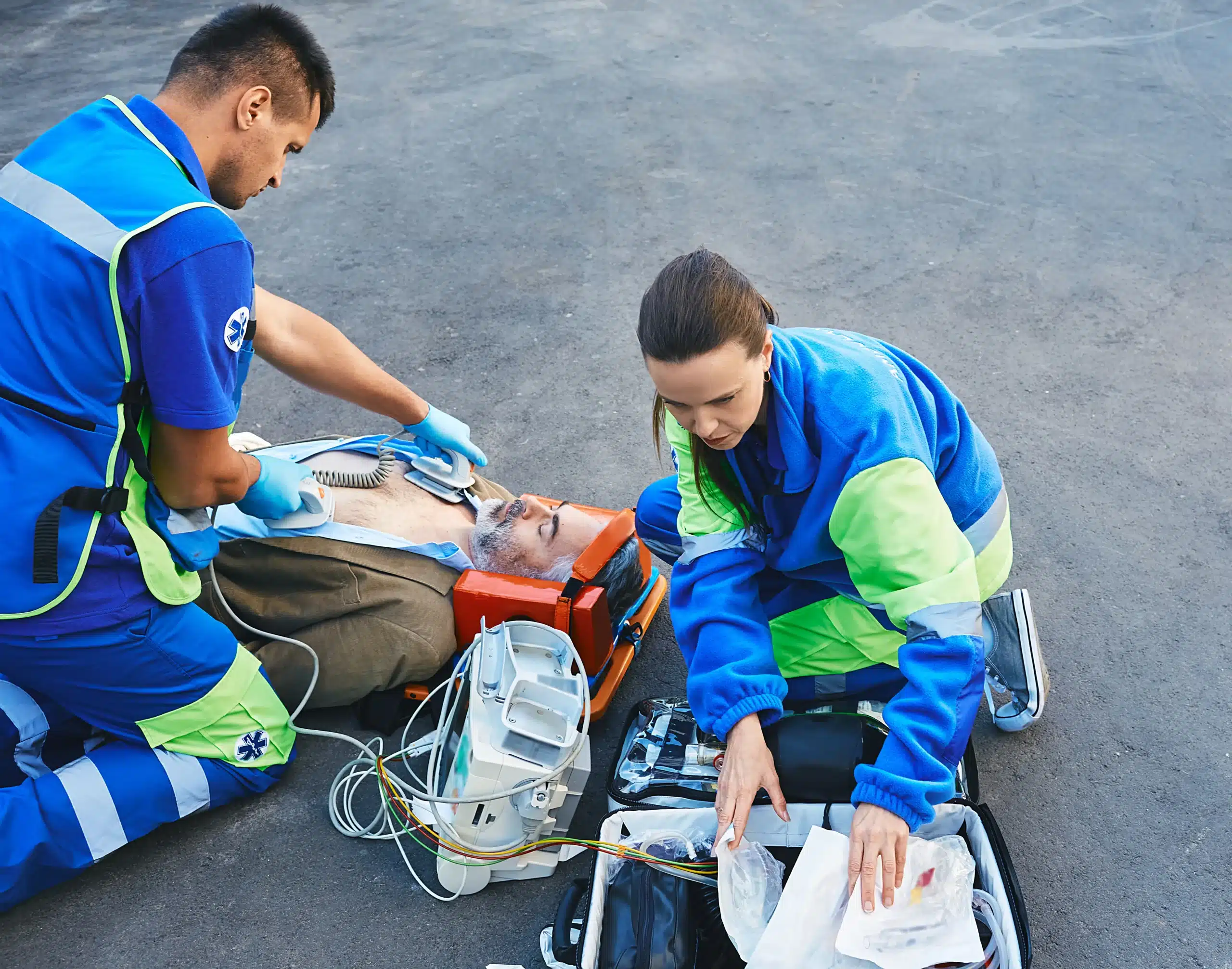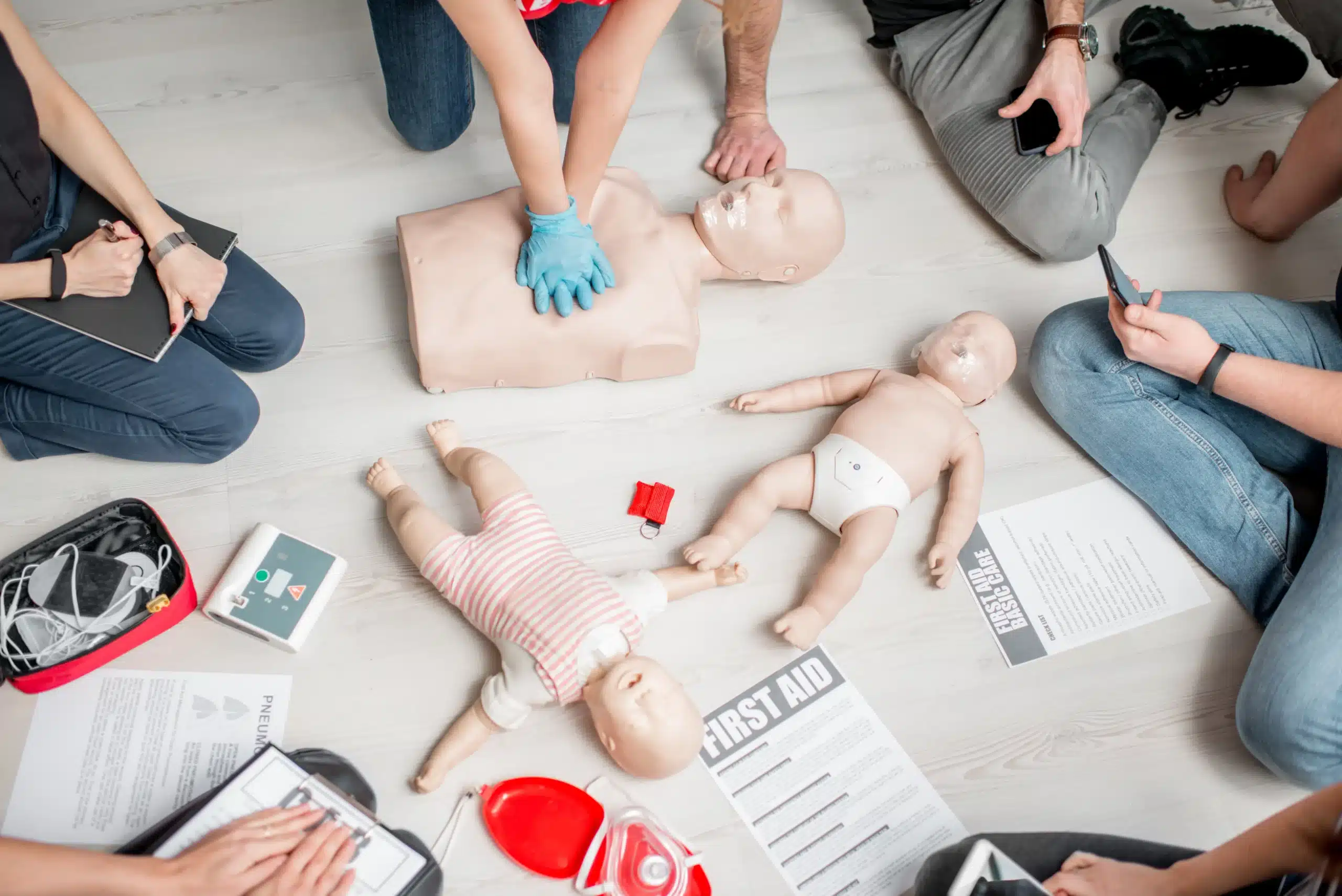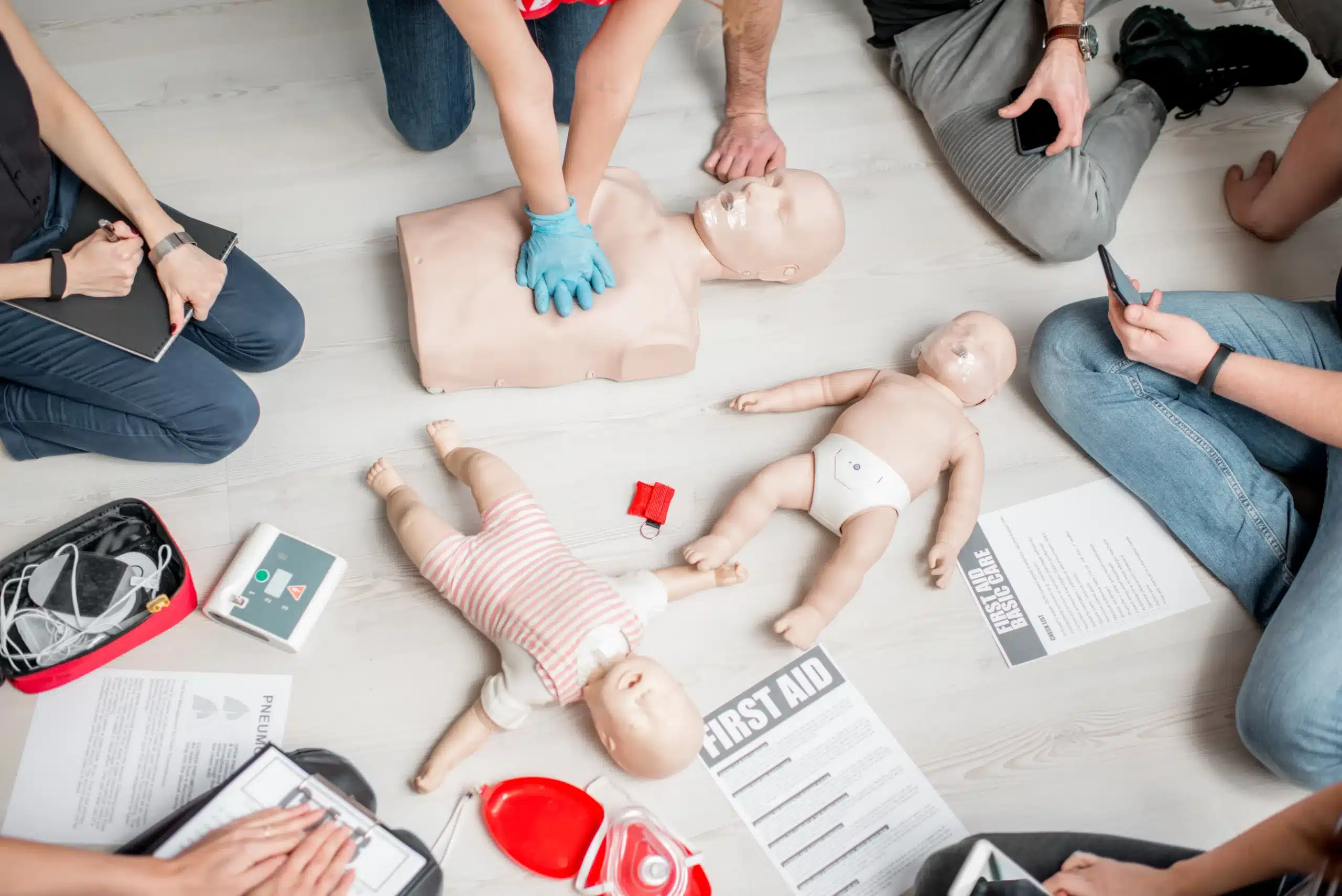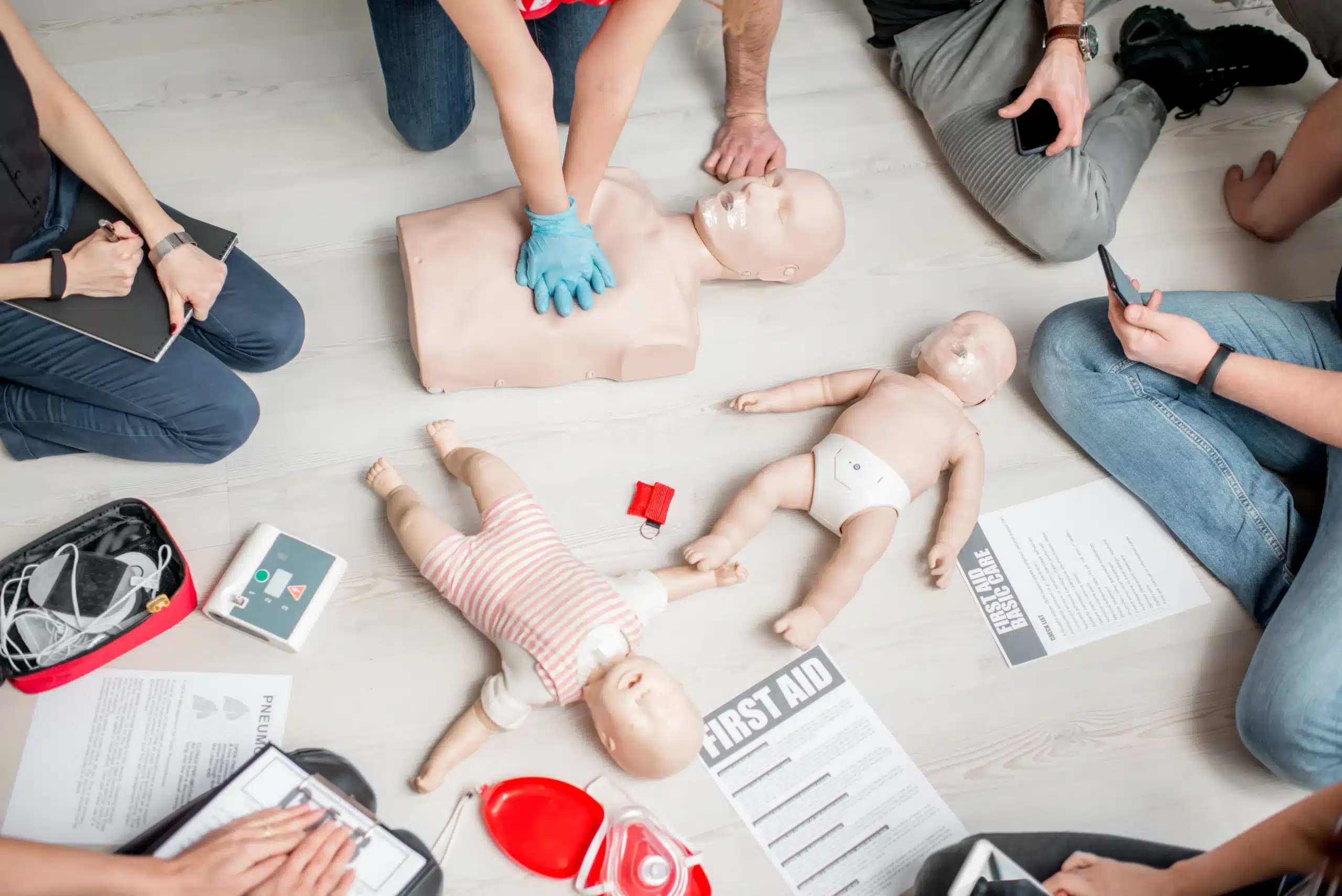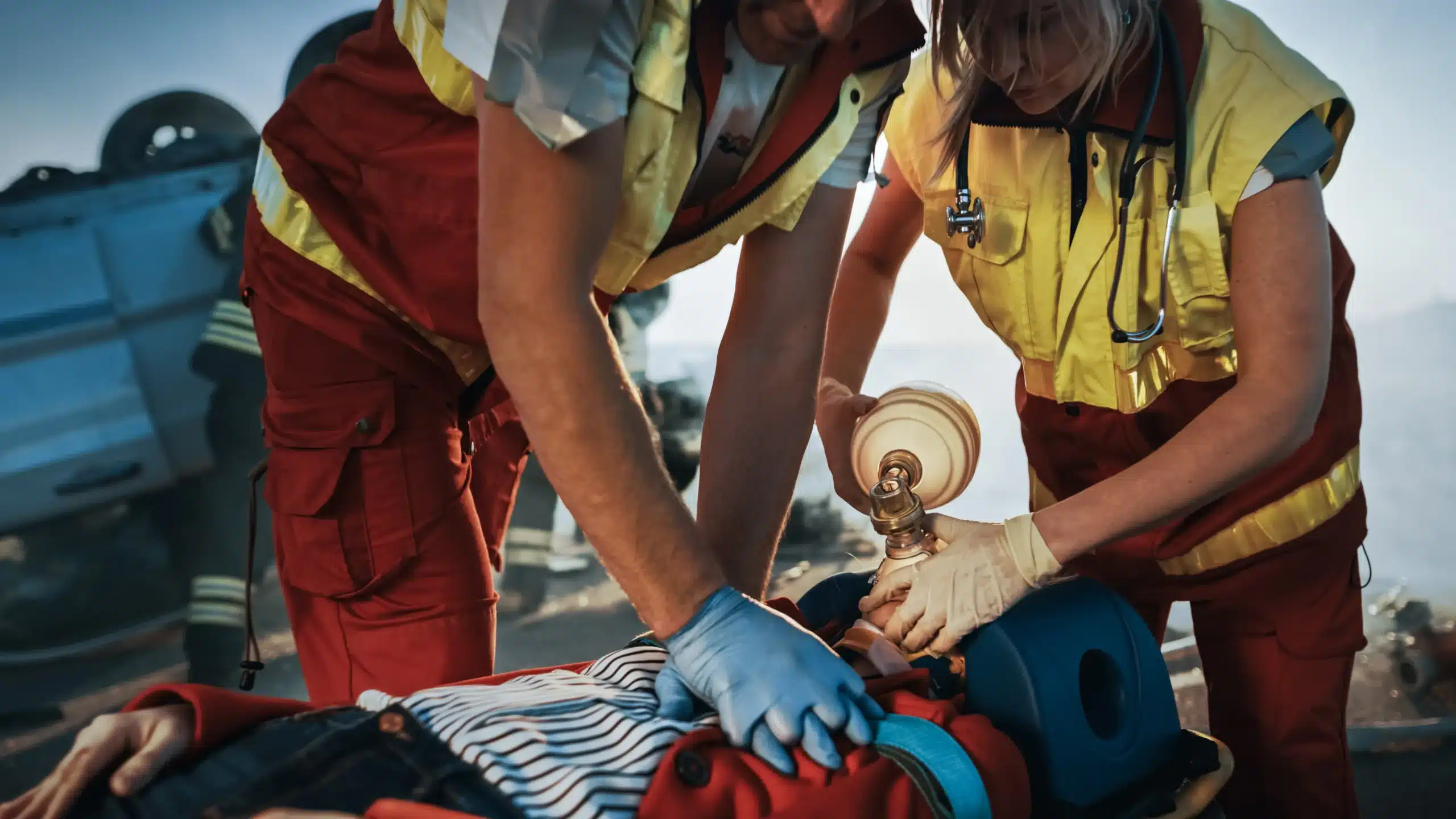Learning first aid can feel like getting a superpower—the ability to help in moments that truly matter. But finding the right training can be tricky. This guide breaks down everything you need to know about first-aid training courses in Walnut Creek, from CPR and BLS to advanced certifications like ACLS and PALS. We’ll cover different learning styles, flexible scheduling, and what to expect in a quality course. Plus, we’ll explore top training providers in Walnut Creek, so you can find the perfect fit for your needs and make a real difference in your community.
Key Takeaways
- First-aid training prepares you for a range of medical situations: From everyday injuries to life-threatening emergencies, having these skills allows you to offer immediate assistance while waiting for professional medical help. Find a course that fits your specific needs and interests.
- Select a reputable training provider and qualified instructor: Look for instructors certified by recognized organizations like the American Heart Association. Real-world experience and a commitment to ongoing learning are key indicators of a quality instructor. Consider course format, schedule, and cost when making your decision.
- Stay current with the latest guidelines and refresh your skills: First-aid and CPR best practices evolve, so regular refresher courses and ongoing practice are essential. Actively look for opportunities to use your skills and maintain your confidence in responding to emergencies.
What is First-Aid Training?
First-aid training equips you with the skills to handle medical emergencies. From minor injuries to life-threatening situations, these courses empower you to provide immediate care until professional help arrives. Let’s explore some key areas covered in first-aid training:
CPR and BLS
CPR (Cardiopulmonary Resuscitation) and BLS (Basic Life Support) are cornerstones of first-aid training. These certifications teach you how to respond to cardiac emergencies and breathing difficulties. Safety Training Seminars offers American Heart Association (AHA) certified CPR and BLS classes, recognized and preferred by employers worldwide. These courses cover essential techniques like chest compressions, rescue breaths, and using an AED.
ACLS
ACLS (Advanced Cardiovascular Life Support) training builds upon the foundational skills of CPR. Designed for healthcare professionals, ACLS courses delve into advanced techniques for managing respiratory issues and other medical emergencies. This certification is crucial for doctors, nurses, paramedics, and other healthcare providers who need specialized training in cardiovascular emergencies. Understanding the difference between BLS and CPR certifications is important when choosing the right course. ACLS classes cover a range of advanced life support techniques.
PALS
PALS (Pediatric Advanced Life Support) training focuses on the specific needs of infants and children facing medical crises. This specialized course equips healthcare providers with the skills to assess and treat pediatric emergencies effectively. PALS certification covers topics like airway management, fluid resuscitation, and recognizing signs of critical illness in young patients.
First-Aid and Emergency Response
First-aid training encompasses a broad spectrum of medical situations, from treating minor cuts and burns to responding to more serious injuries like fractures and allergic reactions. First-aid courses also cover environmental emergencies like heatstroke and hypothermia, providing you with a well-rounded skill set to handle various situations.
EMSA Child Care Health & Safety
The EMSA Child Care Health & Safety training focuses on the unique health and safety needs of children in childcare settings. This program prepares caregivers to prevent and respond to emergencies, ensuring they can provide a safe and healthy environment for the children in their care. Learn more about how this specialized training can benefit childcare providers.
Find the Right Course Format & Schedule
Finding the right course format and schedule is key to completing your first-aid training. Thankfully, several options are available, so you can choose what best suits your learning style and lifestyle.
In-Person Training
In-person training offers a hands-on learning experience ideal for those who thrive in interactive environments. Safety Training Seminars offers in-person courses seven days a week, covering everything from basic CPR to advanced certifications like ACLS. This format allows for immediate feedback from instructors, real-time practice, and the chance to connect with other students.
Online Learning
If you have a packed schedule or prefer learning at your own pace, online learning might be a good fit. Providers like CPR Education offer online courses, allowing you to study anytime, anywhere. This format offers flexibility and convenience, making it easier to fit training into a busy life. Keep in mind that online-only courses may require a separate in-person skills session for some certifications.
Blended Learning
Blended learning combines online learning with in-person skills sessions. You’ll complete the cognitive portion of the course online, then attend an in-person skills session to practice and demonstrate your abilities. This approach offers flexibility while still providing the essential hands-on training component.
RQI Certification
For healthcare professionals seeking BLS, ACLS, or PALS certification, the Resuscitation Quality Improvement (RQI) program is a streamlined option. RQI certification focuses on frequent, low-dose learning and skills practice to maintain competency, ensuring healthcare providers stay up-to-date with the latest resuscitation guidelines.
Flexible Scheduling
Many training centers understand busy schedules. Safety Training Seminars offers flexible scheduling options, with classes available daily in Walnut Creek and surrounding areas. This makes it easier to find a time that works for you, whether it’s a weekday evening or a weekend session.
Get Certified
Getting your first-aid certification is a straightforward process. After completing your chosen course—whether it’s CPR, ACLS, or basic first aid—you’ll typically take an exam and perform practical assessments to demonstrate your skills.
Exams and Practical Assessments
These assessments evaluate your understanding of the material and your ability to perform life-saving techniques correctly. The practical portion often involves demonstrating skills like CPR on a manikin or bandaging a simulated wound. Don’t worry, instructors provide guidance and support throughout the process. Successful completion of these requirements leads to your certification.
Certification Duration
Most first-aid certifications are valid for two years. This timeframe ensures your knowledge and skills are up-to-date. Knowing your certification’s expiration date is crucial for staying current.
Renew Your Certification
Before your certification expires, you’ll need to take a refresher course to renew it. These courses cover essential skills and any updated guidelines. Renewing is a simple way to maintain your qualifications and continue providing effective first aid. Check with your certifying organization or training provider for details on renewal requirements and available courses. You can also explore options like the RQI program for convenient certification maintenance.
Top Walnut Creek Training Providers
Finding the right training provider is key to a positive and effective learning experience. Here’s a look at some of the leading options for first-aid and CPR training in Walnut Creek:
Safety Training Seminars
Safety Training Seminars is a woman-owned American Heart Association (AHA) Training Center, dedicated to providing high-quality BLS, ACLS, PALS, CPR, and first-aid courses. They offer CPR and first-aid classes in Walnut Creek, taught by AHA-certified instructors with real-world experience in emergency situations. Their commitment to comprehensive training and a low price guarantee makes them a reliable choice.
American Red Cross
The American Red Cross is a well-known provider of first-aid training, offering courses designed to equip individuals with the skills to respond to emergencies involving both adults and children. With options for online learning, in-person classes, and blended learning, the Red Cross provides flexible options to fit various schedules and learning preferences.
CPR Education
CPR Education focuses on delivering CPR classes and training programs in Walnut Creek and surrounding areas. Their instructors hold American Heart Association certifications and bring experience as emergency personnel, ensuring students receive high-quality, current training. This provider offers CPR certifications for those seeking training in these specific techniques.
Coast2Coast First Aid & Aquatics
Coast2Coast First Aid & Aquatics offers a targeted approach to first-aid training, with two primary courses: Emergency First Aid and Standard First Aid, both incorporating CPR/AED training. They recommend their Standard First Aid course, which often meets workplace requirements. This focused approach and course selection guide can be beneficial for those seeking specific certifications for employment.
Local Hospitals and Medical Centers
Many local hospitals and medical centers in Walnut Creek offer various first-aid and CPR training programs. Connecting with these institutions can provide access to specialized courses and resources. Consider exploring opportunities like joining the Walnut Creek Community Emergency Response Team (CERT) for advanced training and community involvement. You can find more information about local certifications and classes in Walnut Creek.
Look for Qualified Instructors
Finding the right first-aid training course involves more than just picking a convenient time and location. The quality of your instruction significantly impacts how well you absorb and retain these lifesaving skills. Here’s what to consider when evaluating instructors:
Instructor Certifications
First things first, confirm your instructors hold current certifications from a reputable organization like the American Heart Association (AHA). Safety Training Seminars, for example, is a woman-owned AHA Training Center committed to providing high-quality instruction. This ensures your training aligns with the latest, evidence-based practices. Look for instructors specifically certified in the courses they teach, whether it’s BLS for healthcare providers or ACLS training.
Emergency Services Experience
Real-world experience matters. Instructors who have worked in emergency services bring a practical perspective to the classroom. They can offer insights into how these skills are applied under pressure, answer your questions based on their firsthand knowledge, and provide context that goes beyond the textbook. Look for programs, like those at Safety Training Seminars, where instructors have extensive experience in emergency situations.
AHA Affiliation
The AHA sets the standard for resuscitation training. If you’re pursuing BLS certification, consider the RQI program, which focuses on high-quality CPR skills and is offered through AHA Training Centers like Safety Training Seminars. This affiliation ensures your training meets the rigorous standards set by the AHA and keeps your skills current. It’s a great way to stay on top of any updates in CPR guidelines and techniques. For those working in childcare, the EMSA Child Care Health & Safety course, also offered through Safety Training Seminars, provides specialized training relevant to this setting.
Ongoing Professional Development
The medical field is constantly evolving. Choose instructors dedicated to ongoing learning and professional development. This commitment ensures they’re teaching the most current methods and techniques. Look for training providers who emphasize practical, hands-on training and who actively work to debunk common first-aid myths. This approach ensures you receive comprehensive, up-to-date instruction that prepares you for real-life emergencies.
Choose the Right Course
Picking the right first-aid course isn’t one-size-fits-all. It depends on your career goals, personal interests, and budget. Here’s a breakdown of key factors to consider:
Professional Requirements
Many professions require specific certifications. Healthcare providers, for example, often need AHA certifications for BLS, ACLS, and PALS. Check with your employer or professional organization to see which certifications are necessary for your field. Safety Training Seminars offers a range of AHA-certified courses in Walnut Creek, ensuring you meet these standards. If you’re in childcare, the EMSA Child Care Health & Safety course might be required.
Personal Interests & Skill Development
Beyond professional requirements, think about your personal learning style and goals. Are you interested in basic CPR for personal knowledge or more comprehensive training? Do you prefer in-person instruction or the flexibility of online learning? Consider what skills you want to develop and how you learn best. RQI classes are a great option for convenient certification renewal.
Costs & Low Price Guarantees
Training costs can vary. It’s wise to compare prices and look for providers with a low-price guarantee, like the one Safety Training Seminars offers in Contra Costa County. This helps ensure you get quality training without overspending.
Course Content & Depth
Finally, examine the course content. Some courses focus on adult CPR and first aid, while others cover pediatric care or more specialized emergencies. Make sure the course content aligns with your specific needs and interests. Think about the depth of training you require and choose a course that provides the appropriate level of detail.
What Happens in a First-Aid Course?
Taking a first-aid course is a rewarding experience, giving you essential lifesaving skills. Here’s a glimpse of what you can expect during your training:
Course Materials & Equipment
First-aid courses blend textbook learning with hands-on practice. You’ll receive comprehensive course materials covering essential first-aid techniques, from wound care and CPR to recognizing medical emergencies. Instructors use specialized equipment like mannequins, bandages, and AED trainers to simulate real-life scenarios, building your practical understanding of how to respond effectively. Safety Training Seminars, an American Heart Association (AHA) Training Center, offers high-quality courses and provides all the necessary materials and equipment for a thorough learning experience.
Hands-On Practice
Hands-on practice is the core of effective first-aid training. You’ll have plenty of opportunities to apply what you learn in a safe and controlled environment. Practical exercises reinforce your understanding and build muscle memory, so you can react confidently in real emergencies. This approach not only dispels common first-aid myths but also empowers you with practical skills.
Real-Life Scenarios
First-aid courses often use real-life scenarios to prepare you for diverse emergency situations. Instructors present these scenarios, challenging you to assess the situation, make quick decisions, and apply the right first-aid techniques. Training often covers common emergencies like choking, bleeding, burns, and allergic reactions, ensuring you’re prepared to handle a range of situations.
Assessments
Most first-aid courses include assessments to evaluate your understanding and practical skills. These may involve written exams, practical demonstrations, or both. Successful completion earns you a two-year certification, validating your first-aid proficiency. Many providers also offer refresher courses to help you maintain your skills and knowledge.
Use Your First-Aid Skills
Knowing first-aid basics is great, but regularly using and updating those skills is essential. This ensures you’re always prepared and confident in an emergency. Let’s explore how you can make the most of your first-aid training.
Refresher Courses & Skill Updates
First-aid guidelines and best practices evolve, so staying current is crucial for providing effective care. Regular refresher courses reinforce your knowledge and introduce you to any updated procedures. The American Heart Association’s Resuscitation Quality Improvement (RQI) program, offered through providers like Safety Training Seminars, is a great way to maintain your BLS certification and keep your skills sharp. These courses cover essential life-saving techniques like CPR and ensure you’re always ready to respond effectively. Consider exploring the RQI program and BLS certification options at Safety Training Seminars.
Practical Application
Look for opportunities to apply your first-aid skills in low-stakes environments. This could be volunteering at community events, assisting with first-aid needs at your workplace, or even practicing basic bandaging techniques at home. Safety Training Seminars offers various certification courses, including CPR, BLS, ACLS, PALS, and First Aid, seven days a week. These courses, taught by AHA-certified instructors with real-world experience, provide the practical, hands-on training you need to feel comfortable using your skills. The more you practice, the more confident and prepared you’ll become.
Build Confidence in Emergencies
Emergencies are stressful, and knowing you can handle the situation makes all the difference. Quality first-aid training not only teaches you the necessary skills but also builds your confidence to use them under pressure. It dispels common first-aid myths and empowers you to act decisively when it matters most. This confidence can be invaluable, allowing you to provide effective assistance while remaining calm and focused. For more information on common misconceptions, take a look at this helpful resource on debunking first-aid myths.
First-Aid Training’s Impact on Safety
First-aid training gives people the skills to respond effectively in emergencies. It empowers anyone nearby, employees, and managers to provide immediate care, potentially lessening injuries and even saving lives. Proper training addresses common first-aid misconceptions and builds confidence in emergencies. This creates safer workplaces, homes, and communities. Knowing how to control bleeding, manage a fracture, or administer CPR can significantly improve outcomes while waiting for professional medical help. Effective first-aid training offers practical, hands-on learning for real-life scenarios, building confidence and preparedness. This preparedness creates a safer environment for everyone. At Safety Training Seminars, our comprehensive first-aid courses ensure you receive your American Heart Association (AHA) certification card the same day, so you’re ready to respond effectively when needed. We cover various topics, from basic wound care to more complex situations, giving you the tools to make a real difference in an emergency.
Related Articles
- CPR Training in Pleasant Hill: Your Complete Guide – Walnut Creek CPR Classes
- ACLS Courses in Walnut Creek: Your Complete Guide – Walnut Creek CPR Classes
- CPR & First Aid Classes in Pleasant Hill: A Complete Guide – Walnut Creek CPR Classes
- BLS Courses in Concord: Find the Right Class for You – Walnut Creek CPR Classes
- Advanced Cardiac Life Support (ACLS) in Concord, CA – Walnut Creek CPR Classes
Frequently Asked Questions
What’s the difference between CPR, BLS, ACLS, and PALS? CPR (Cardiopulmonary Resuscitation) focuses on chest compressions and rescue breaths for anyone experiencing cardiac arrest. BLS (Basic Life Support) builds upon CPR, adding techniques like using an AED and managing choking. ACLS (Advanced Cardiovascular Life Support) is for healthcare professionals, covering advanced airway management and pharmacology in cardiac emergencies. PALS (Pediatric Advanced Life Support) focuses on the specific needs of infants and children in medical crises.
How do I choose the right first-aid course? Consider your professional needs, personal interests, and budget. Healthcare professionals often require specific certifications like BLS, ACLS, or PALS. If you’re looking for personal knowledge or community involvement, a basic first-aid and CPR course might suffice. Also, consider your learning style and whether you prefer in-person, online, or blended learning formats.
How long does a first-aid certification last, and how do I renew it? Most first-aid certifications are valid for two years. You’ll need to take a refresher course before your certification expires to renew it. Check with your certifying organization or training provider for specific renewal requirements and available courses. Programs like the RQI program offer a streamlined way to maintain your BLS, ACLS, or PALS certification.
What can I expect during a first-aid course? Expect a combination of textbook learning, hands-on practice, and real-life scenario training. You’ll learn essential techniques, practice on mannequins and other equipment, and work through simulated emergencies to build your confidence and skills. Assessments, including written exams and practical demonstrations, are typically part of the certification process.
How can I keep my first-aid skills sharp after completing a course? Regularly practicing your skills is key. Consider volunteering for first-aid roles at community events or your workplace. Stay up-to-date with the latest guidelines by taking refresher courses and consider joining professional organizations or online communities to connect with other first-aid providers and share best practices.

